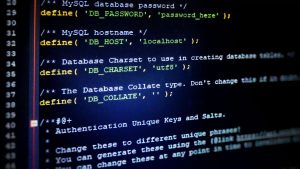Optimizing Command-Line Workflows in BSD with Aliases
The command line is an essential tool for BSD users, providing efficient control over the operating system. However, repetitive typing of long commands can slow down workflows and increase the chances of errors. Aliases offer a simple way to streamline common tasks by assigning custom shortcuts to frequently used commands.
Setting up aliases in BSD improves efficiency, reduces keystrokes, and simplifies complex command sequences. Whether renaming a long command, creating a shortcut for system maintenance, or customizing terminal behavior, aliases enhance productivity. Learning how to define and manage them allows users to optimize their command-line experience.
This guide covers everything from creating basic aliases to configuring persistent command shortcuts. By the end, users will understand how to customize their BSD environment for faster and more efficient terminal interactions.
Understanding Aliases in BSD
Aliases in BSD act as shortcuts for frequently used commands. Instead of typing a long or complex command repeatedly, users can define an alias that performs the same action with a simpler input. This feature is particularly useful for system administrators and power users who work extensively with the terminal.
For example, a common task like listing directory contents with detailed output requires typing ls -l. Creating an alias allows users to replace this with a shorter command, such as ll. This small adjustment saves time and improves workflow efficiency.
Aliases are supported in most BSD shells, including sh, csh, tcsh, and bash. Understanding how to create and manage them ensures a more productive command-line experience.
Creating Temporary Aliases
Setting up a temporary alias is a quick way to test its functionality. These aliases exist only for the duration of the session and disappear once the terminal is closed.
To create a temporary alias, use the following syntax:
sh
CopyEdit
alias ll=”ls -l”
After running this command, typing ll will execute ls -l. Temporary aliases are ideal for one-time use or testing new shortcuts before making them permanent.
While temporary aliases improve efficiency in a single session, they do not persist after the terminal is closed. For long-term use, aliases need to be stored in shell configuration files.
Making Aliases Permanent in BSD
To retain aliases across sessions, they must be added to the appropriate shell configuration file. The file location depends on the shell being used:
- sh or bash: Edit ~/.shrc or ~/.bashrc
- csh or tcsh: Edit ~/.cshrc
- zsh: Edit ~/.zshrc
Open the corresponding file in a text editor and add alias definitions. For example, to set a permanent alias for listing files in long format:
sh
CopyEdit
echo ‘alias ll=”ls -l”‘ >> ~/.shrc
After saving the file, apply changes by running:
sh
CopyEdit
source ~/.shrc
This ensures that the alias is available in future terminal sessions, eliminating the need to redefine it every time.
Using Aliases to Simplify Complex Commands
Aliases are not limited to shortening basic commands; they can also replace complex command sequences. This is particularly useful for automating tasks such as updating packages, managing system logs, or restarting services.
For example, instead of typing multiple commands to update FreeBSD packages, an alias can be created to perform all actions with a single input:
sh
CopyEdit
alias updatebsd=”pkg update && pkg upgrade”
With this alias, users only need to type updatebsd to update the system, reducing effort and ensuring consistency.
Aliases also help enforce best practices by preventing mistakes. For instance, setting an alias for rm with a safety prompt can prevent accidental file deletion:
sh
CopyEdit
alias rm=”rm -i”
By integrating aliases into daily workflows, users can simplify repetitive tasks and maintain system efficiency.
Managing and Removing Aliases
To view all active aliases in the current session, use the following command:
sh
CopyEdit
alias
If an alias is no longer needed, it can be removed using unalias:
sh
CopyEdit
unalias ll
For permanent removal, the alias must be deleted from the shell configuration file and the changes reapplied with source.
Managing aliases regularly ensures that only useful shortcuts remain in use, keeping the command-line environment clean and efficient.
Combining Aliases with Shell Functions
While aliases are effective for simple shortcuts, shell functions provide more flexibility for handling complex tasks. Functions allow for multiple commands, user input, and condition-based execution.
For instance, an alias can be expanded into a function for improved functionality:
sh
CopyEdit
backup() {
tar -czf backup.tar.gz ~/Documents
echo “Backup completed!”
}
Saving this function in the shell configuration file enables it for future sessions. By combining aliases with functions, users can build a more efficient and customized BSD command-line environment.
Using Global Aliases for System-Wide Shortcuts
Aliases defined in user configuration files are only available to that specific user. However, system-wide aliases can be set for all users by adding them to global shell configuration files.
For sh or bash, global aliases can be placed in /etc/profile, while csh users can edit /etc/csh.cshrc.
For example, to create a system-wide alias for viewing system logs:
sh
CopyEdit
echo ‘alias syslog=”tail -f /var/log/messages”‘ >> /etc/profile
By defining global aliases, administrators can ensure consistency across all user accounts, making common tasks accessible to everyone.
Optimizing Command-Line Workflows with Aliases
Using aliases in BSD provides a simple yet powerful way to improve command-line efficiency. By reducing keystrokes, simplifying complex commands, and maintaining a structured approach, users can optimize their workflow without altering the core functionality of the system. Custom aliases help eliminate repetitive typing, making routine tasks faster and more intuitive, especially for users who frequently work in the terminal.
Regularly reviewing and refining aliases ensures that they remain useful and relevant. Whether setting up personal shortcuts or managing system-wide configurations, aliases play a key role in making BSD command-line interactions more effective. Over time, refining aliases to adapt to evolving tasks and system updates can prevent outdated shortcuts from causing inefficiencies or confusion.
For users managing multiple systems or collaborating in shared environments, documenting commonly used aliases can improve consistency across teams. Establishing a standardized set of aliases for administrative tasks ensures that team members can work efficiently without having to memorize lengthy commands. This practice fosters smoother workflow automation and enhances overall system usability.










No Responses